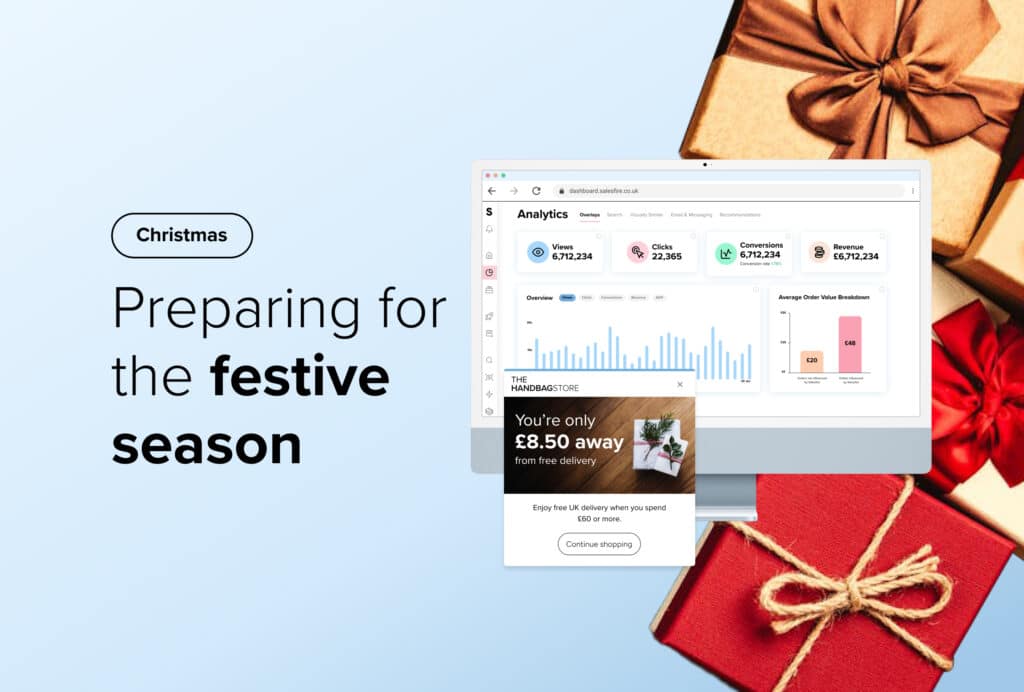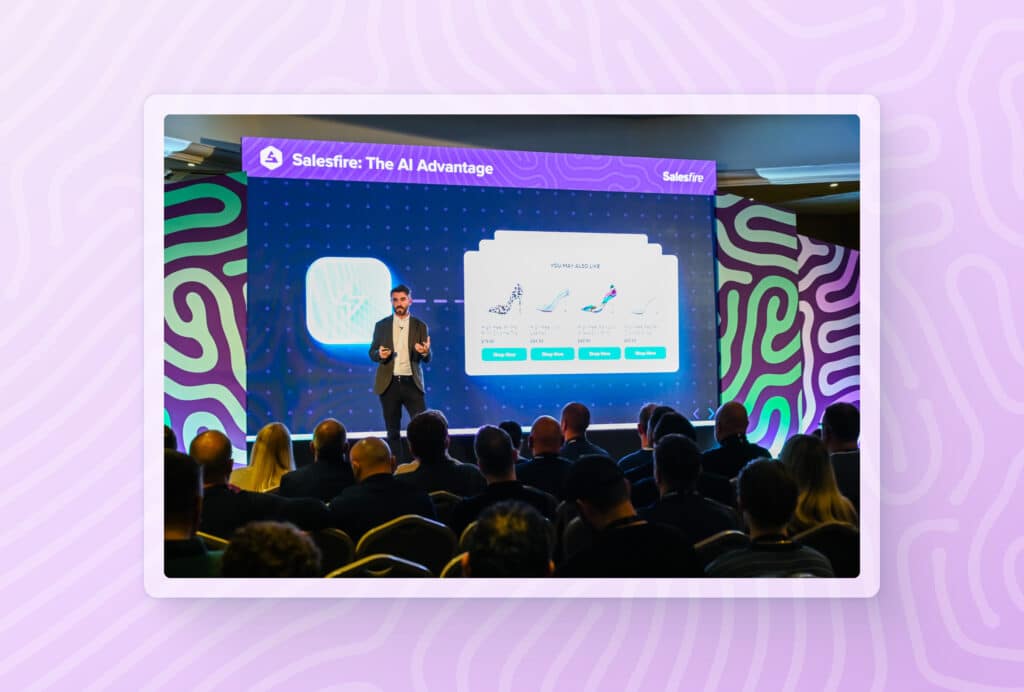Why You Should Upgrade Your eCommerce Social Media Strategy
By Courtney O'Riordan • Last updated: Wednesday Apr 24th, 2024

It’s well-known that social media’s influence reaches well beyond that of traditional marketing and advertising. It’s not just about video ads and sponsored posts.
Having a social media presence gives brands the opportunity to influence the purchase decisions of millions of users every day — on platforms that provide fun, interactive experiences.
This influence has led eCommerce companies to use social media platforms as retail channels in their own right. And more than that, the social media experience — from ease of use to personalised experiences — is being replicated on eCommerce platforms.
This article will discuss why and how your eCommerce business should upgrade its social media strategy.
How social media is shaping consumer expectations
Since the inception of social media in 1997, creating a personal experience has been at the heart of platforms such as Facebook and Instagram.
Gianni Casagrande, Managing Director & Consultant at Futcom, shed some light on what this has looked like:
“Social has always been about meaningful experiences, whether that be checking in with your friends and family, researching for your next holiday/home renovation, or feeling inspired for your next Christmas party outfit — it’s a place where we have always felt connected to what we love the most.”²
Nowadays, the hyper-personalisation of targeted paid advertisements and individualised TikTok feeds and Instagram posts have made social media accounts a marketer’s playground by making it easier to offer content tailored to an individual.
This begs the question: how does the continued elevation of personal experiences on social platforms relate to an eCommerce brand and its customers?
Simply, social media is where lots of people do their shopping. After all, two-thirds of modern shoppers use social media as a crucial step in their shopping strategy.³
This reliance on social media for product discovery and inspiration is a double-edged sword.
On one hand, it’s great that a portion of users’ daily two and a half hours of social scrolling could contribute to eCommerce sales.⁴
On the other, hyper-personalised social media experiences are setting a new standard for eCommerce shopping experiences. If an online retailer isn’t up to this standard, it could cause webpage abandonment and prevent sales.
Upgrading your social media will be a requirement for future-proofing your eCommerce brand — but your work doesn’t end there. You must also upgrade your site’s functionalities to match the expectations that your social media has created for your existing and potential customers.
How to upgrade your eCommerce social media strategy
As the prominence of mobile and social commerce grows, eCommerce must adapt to evolving customer behaviour and trends.
Let’s explore how you can create a social media marketing strategy to ensure your brand won’t get left behind.
1. Generate opportunities for product discovery
The average path to purchase now includes social media as a source of product discovery.
In fact, 76% of consumers have purchased a product they have seen on social media.⁵
With this in mind, targeting your audience with product content via social media ads is an incredibly effective approach to increase conversions and drive sales.
Your social media management team shouldn’t view this as the daunting task it may appear to be.
Thanks to social media platforms optimising their advertising offerings, it’s now easier than ever to create ad campaigns from existing social content.
As Gianni explained:
“Whilst traditional eCommerce tactics are slowly on the decline, the shift in consumer behaviour will no doubt influence social commerce over the coming years, as we move to a digital experience world. It’s therefore important for marketers to seize this opportunity and look at how they can enhance the shopping experience for their customers across all channels, including social media.
“For now, social media is the new frontier for commerce, but will surely become even more mainstream before we know it. While expensive campaigns may have been traditionally reserved for larger brands previously, it’s now far more accessible for brands, both big and small, to experiment with social commerce to give their customers an unforgettable online experience.”
The benefits of deploying ads across your social media accounts are too great to ignore. You can expect to:
- Increase brand awareness amongst new audiences
- Put your brand at the front of your customers’ minds
- Recover abandoned baskets with retargeting ads
- Increase website traffic and conversions
- Build trust and authenticity by promoting reviews and social proof
But winning the attention of potential customers is only half the battle. Your site must work to make the transition from your social media to your eCommerce site seamless in order to secure purchases.
Pro tip: Guarantee that your website is working smarter than your competitors by implementing solutions such as Visually Similar Search.This opens up the opportunity for visitors to translate their social media shopping inspiration generated from ads into relevant results.
You can help visitors continue a personalised product discovery journey by presenting visually similar recommendations to the products they’re viewing. Plus, by enabling visitors to upload images from social media, you can help them find exactly what they’re looking for.
Suggested reading: How Has Social Media influenced the eCommerce Product Discovery Experience?
2. Create shoppable posts
61% of DTC brands reach most of their shoppers through social media.⁶ With this in mind, you should ensure that your social content is optimised to connect your target audience with their purchase.
A constructive way of engaging potential customers with your products or services is by tagging products in shoppable posts on Instagram. Shoppable posts are social media products sold directly from users’ feeds.⁷
Businesses can take advantage of the different kinds of shoppable posts to encourage customers to buy. This includes
- Feed posts: Businesses can utilise user-generated content here to create authenticity and trust amongst your followers.
- Reels: Reels get 22% more engagement when compared to normal video content. That means 22% more reach for your products if promoted through this form of video.
- IGTV videos: Enhance your digital marketing strategy by publishing your longer-form content here.
- Guides: Curate guides based on specific dates, eg. Christmas and Valentine’s Day, to encourage product interaction.
- Livestream: More than 100 million people watch Instagram Live every day.⁸ Livestream shopping has the potential to be the next big thing in eCommerce. Jump on this trend early while directing shoppers to your site.
By using shoppable posts, eCommerce businesses create a direct route to your site via shoppable product promotion posts shortens the customer journey and increases conversions.
Solution: Continue the individualised product experience on your site with Recommendations at every step of the customer journey.
From showcasing best sellers on your homepage for new visitors, to encouraging customers to build bigger baskets by cross-selling items on the basket page, Recommendations enhance the customer experience and simplify the path to purchase.
Serving personalised suggestions to your customers will help to replicate the experience of social media algorithms on your site and ensure you’re serving relevant recommendations that are going to inspire your visitors.
Pro tip: Post regular shoppable posts to increase the chance of your business being featured on the Instagram Shop discovery tab.⁹
3. Respond to user behaviour
Progress in data collection has resulted in hyper-personalised social feeds.
Posts, ads and products are presented based on individuals’ on-site behaviour: for example, how they’ve interacted with products and ads (or not). The algorithms of social sites help eCommerce brands make sure their content is visible to those with a genuine interest.
But to ensure you don’t get lost in a sea of content, and interact directly with your audience, turn your customers into content creators by encouraging user-generated content (UGC).
This way you can make certain that your products are appealing to the 79% of people who claim UGC highly impacts their purchase decision — even when you’re not actively posting.⁹
Don’t underestimate the power of interacting with your audience. Reinforce their sense of value to your brand by liking, commenting and sharing their posts.
They will repay you by becoming brand advocates who continue to engage with your brand.
Considerations: Maintain this level of personalisation on social accounts on eCommerce website.
Using solutions such as Digital Assistant will prove to be critical in fulfilling the expectations of a social media shopper. Experiment with DA campaigns that directly respond to the behaviour of individuals to craft personalised messaging at every step of the customer’s journey.
Make use of campaigns that are triggered by a visitor’s mouse movements to enhance your personalisation efforts and implement Overlays to provide relevant information at pivotal moments.
4. Take advantage of social listening
It’s easy to view the exponential growth of social media as a threat. Instead, view eCommerce and social media as two peas in a pod.
As social media grows, as does the amount of traffic it directs to eCommerce stores and the number of people it influences to buy a product.
Jordan Dakota Nixon, Head of Paid Social at The Social Co, touched on this:
“Social media plays an integral part in the circle of channels for your eCom business. Long gone are the days of basic Meta- only adverts used to drive traffic. We now have a healthy ecosystem of platforms that are able to drive traffic and increase sales. From TikTok and Snapchat delivering a healthy amount of traffic and lower CPMs to Pinterest displaying beautiful shopping ads to retarget your users. Analysing data from each channel will enable you to allocate spend and develop a strategy accordingly.
“Social media has already taken the leap and is enabling users to purchase through the platforms, such as the popular TikTok shop. This creates a quicker and more streamlined shopping experience for the user without having to leave the app. We recommend A/B testing website conversions against social commerce sales to see which works best for your business.”¹⁰
Focus on using social listening to identify trends your target audience is responding to or to assess what campaigns are working for your competitors.
Monitoring key metrics with social media management services, such as Sprout Social, will be a necessary step in creating loyal customers, successful campaigns and a profit-generating website.
The future of eCommerce is now
Social media has often been viewed as just one digital marketing tactic amongst many in the world of eCommerce.
Although the future of the industry is still evolving, it’s fair to say that the impact of social media is here to stay.
With that knowledge, what are you waiting for?
Begin upgrading your eCommerce social strategy to give your brand the competitive edge needed to thrive.
1. The History of Social Media | Search Engine Journal
2. Futcom
3. How Shoppers Are Using Social Media | Forbes
4. Global social media statistics research summary 2022 | Smart Insights
5. 76% of Consumers Buy Products Seen In Social Media Posts | Retail Touch Points
7. 10 Proven Instagram Reel Strategies to Increase Your Brand’s Followers | eclincher
8. Instagram Live Statistics 2022: Is Livestreaming Effective? – EarthWeb
9. 7 advantages of social media advertising for your business | Common Ground
10. The Social Co
See how Salesfire can help you optimise your product discovery experience, email one of our experts at [email protected] or book a free demo of our personalisation tools.





